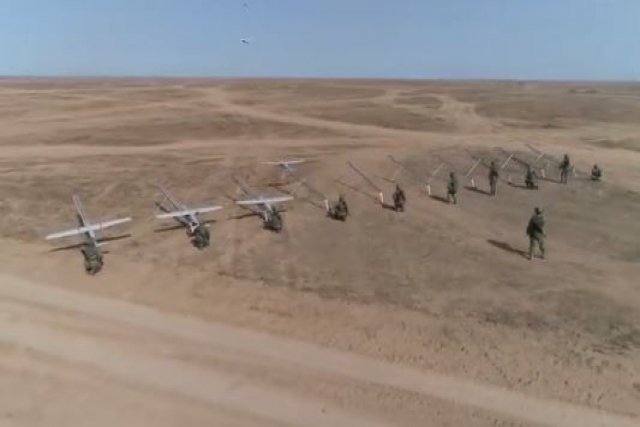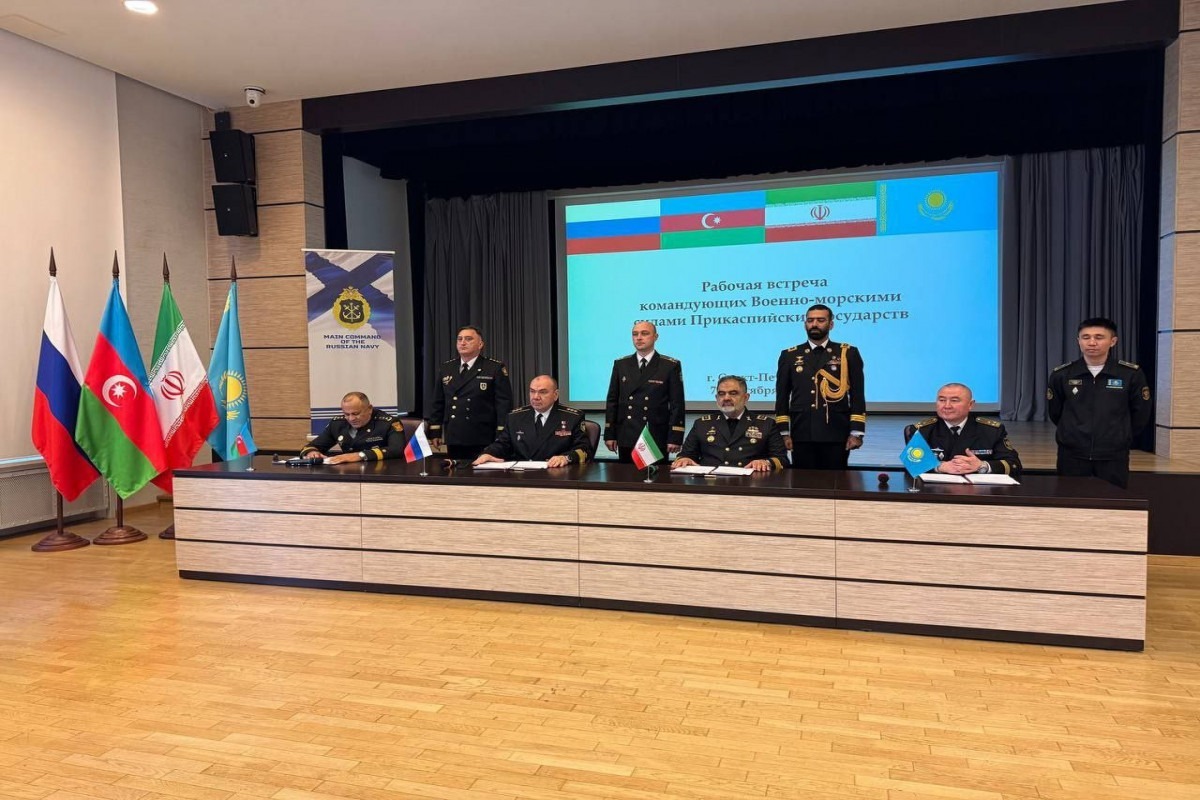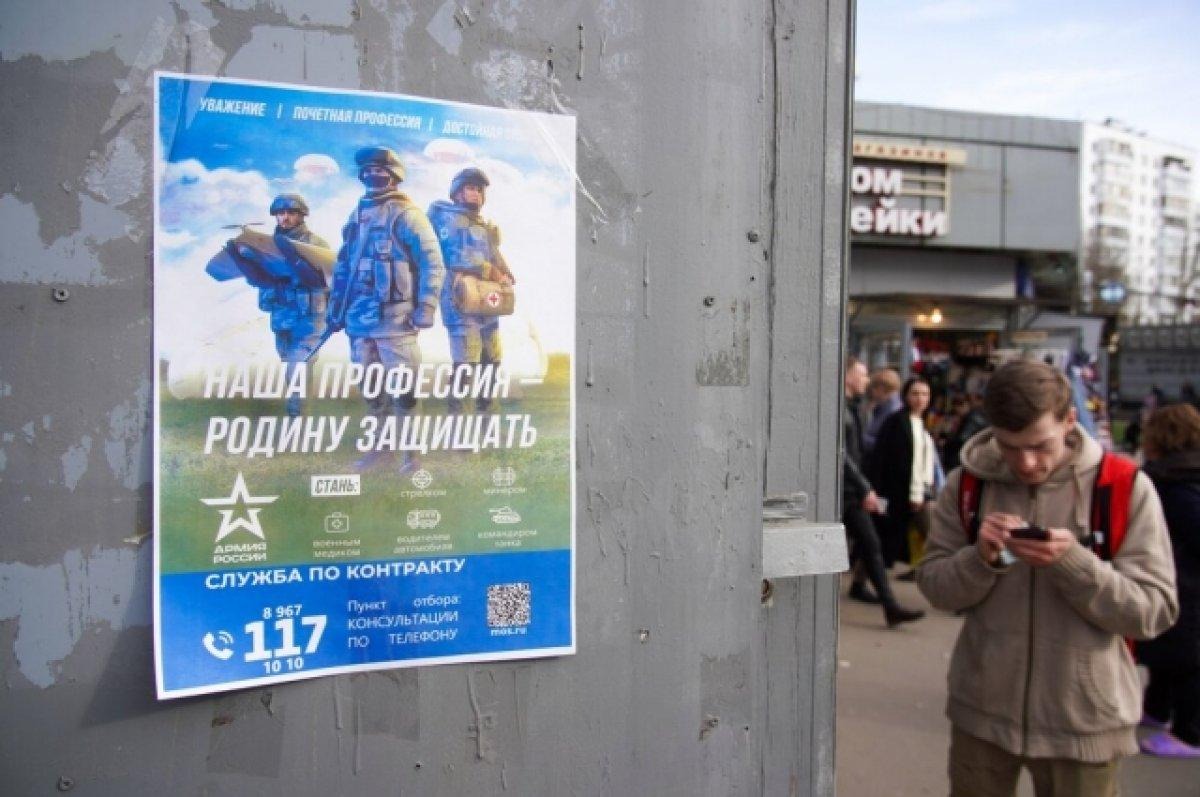
Russia’s Armed Forces Test UAV Swarm Tactics in Kavkaz 2020
Russia’s Armed Forces Test UAV Swarm Tactics in Kavkaz 2020
This year’s Russian annual strategic command-staff exercise (strategicheskiye komandno-shtabnyye ucheniya—SKShU) was Kavkaz 2020, held during September 21–26 and centered on the Southern Military District (MD). The exercise tested a wide range of military capabilities and took place across a diverse swathe of geographic locations within and beyond the Southern MD, including tactical training elements in Armenia, the separatist Georgian regions of Abkhazia and South Ossetia, as well as extending into the Black and Caspian seas. Much of the Russian media concentrated on the “international” dimension of Kavkaz 2020, with special focus on the involvement of forces from China and the support for maritime operations in the Caspian Sea provided by the Iranian Navy. Nevertheless, the SKShU remained an essentially Russian strategic exercise; and its numerous episodes and combat rehearsals revealed innovations in Moscow’s approaches to modern and future warfare (see EDM, September 14, 23).
Officially, the exercise was publicized as “defensive” and not aimed against a foreign state. However, there were multiple cases of rehearsals of combat operations that simply could not be considered as such. According to Russian Deputy Defense Minister Army General Nikolai Pankov, the peculiarity of the Kavkaz 2020 exercise was its scale: “The practical actions of the troops were carried out at 14 training grounds and in the waters of the Black and Caspian seas. Every year, in the course of strategic exercises, we learn to improve professional skills, taking into account the emergence of new types of weapons and military equipment, [as well as] new forms and methods of conducting military operations.” News reporting on the annual Russian strategic exercises frequently offered the phrase “new means and methods,” without providing any detail. Nevertheless, it is possible to conclude that Kavkaz 2020 marked a breakthrough in Russian military thinking concerning specific air-defense issues (Voyenno Promyshlennyy Kuryer, September 29).
The exercise reportedly featured the use of a new combat formation, referred to as a “mobile echelon,” and concentrated on rehearsing operations based on high mobility defense against a state actor. Much of this appears to draw upon experience gained in Syria, including different ways to counter suicide bombers; but the Syrian theater of operations actually offered little of use against a potential state adversary (Izvestia, September 25). The “highly mobile” approach to combat operations seems rooted in mixing artillery firepower with the use of motorized rifle units, which itself does not represent any breakthrough in Russian operational planning (Izvestia, September 25).
In terms of air defense, on the other hand (in an allegedly “anti-terrorist” exercise scenario), Russian assets practiced countering an attack by a high technology state actor, targeting enemy radars and anti-aircraft posts and airfields. The Aerospace Forces (Vozdushno Kosmicheskikh Sil—VKS) sent Su-25, Su-34, Su-24M, MiG-31 and Tu-22MZ jets; An-12, An-26 and Tu-134 transport planes; Mi-8 and Mi-35M helicopters; and others into the air. In total, about 50 aircraft of various types were involved in the air-defense element of Kavkaz 2020. The VKS flew single aircraft or pairs acting in concert at various altitudes, with their identification units switched off. These were complemented by S-400 and S-300 air-defense surface-to-air missile (SAM) systems alongside the anti–cruise missile Pantsir-S1. These SAM batteries were also supported by electronic warfare (EW) systems, to provide a traditionally Russian layered air-defense response to an aerial attack by the aggressor in the exercise scenario (Voyenno Promyshlennyy Kuryer, September 29).
Kavkaz 2020 involved multiple conflict types and vignettes in the overall scenario, which evidently extended well beyond its anti-terrorist theme, including testing the strategic mobility of formations located in other MDs, or examining command and control over forces inter alia involved in joint operations. Yet the main focus lay in countering a state actor launching cruise missile attacks against Russia. This was confirmed by Army General Valery Gerasimov, the chief of the General Staff, who was in charge of the exercise. “The Kavkaz 2020 drills will particularly focus on combating cruise missiles and unmanned aerial vehicles, as well as on fire and electronic warfare activities against entire enemy formations, on training airborne troops’ vertical envelopment capabilities and ways to rapidly shift between military activities,” Gerasimov declared (TASS, September 21).
The stress on countering cruise missiles in such exercises is a recurring theme, reflecting Moscow’s fear of a sudden attack from a high technology adversary, which would seem to fit the United States’ approach to commencing combat operations at this level. Another and related theme is the way unmanned aerial vehicles (UAV) increasingly feature prominently in Russian strategic exercises. This involved the experimental use of “heavy” UAVs for additional strike capability in Tsentr 2019 (see EDM, September 18, 2019). During Kavkaz 2020, the UAV aspects acquired an innovative element, implying shifts in Russian military thinking about the use of drones in future combat operations.
The clearest innovative feature of Kavkaz 2020 relates to the issue of UAV use. For the first time in any Russian military exercise, the UAV rehearsals involved “swarms,” or the use of multiple drones flying together at varied altitudes to assist in targeting enemy forces. Indeed, the UAVs flew at altitudes of 100– 5,000 meters, targeting enemy assets deep behind the lines. According the Russian Ministry of Defense, the UAVs were deployed in order to disrupt enemy terrorist operations. “At the Kapustin Yar training ground, a combined group of unmanned aerial vehicles […] was created. It incorporated Southern MD units armed with Forpost drones, Orlan-10s, Eleron-3s and others.” Acting in unison, these can spot military units on the move and then identify and locate command centers, military equipment and manpower to adjust fire strikes against these targets. In other words, the UAVs were used in swarms not for strike capability but to enhance intelligence, surveillance and reconnaissance (ISR) (TASS, September 24).
While Kavkaz 2020 tested a wide range of Russian military capabilities, as well as joint operations with potential allies, the use of UAV swarms as a means to enhance ISR in attacking enemy formations stands out. This transcends Russian concerns about an enemy air- and space-based attack as a conventional first strike against Russian territory; it represents additional change in the ongoing effort to increase the accuracy of firepower and strike capability, whether in defensive or offensive operations. Having learned in Syria how to protect Russian military assets against UAV swarms, the General Staff is now contemplating swarm concepts as an offensive tool in Russia’s burgeoning conventional capability.


